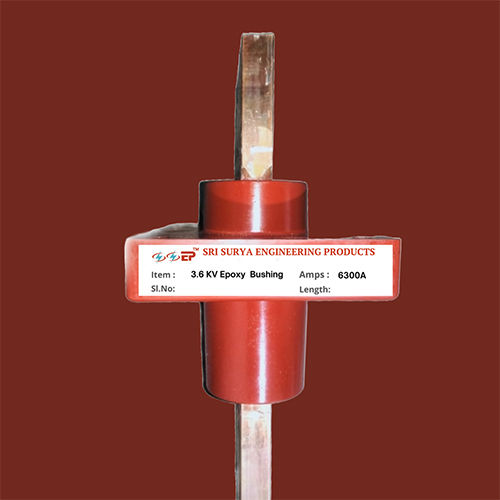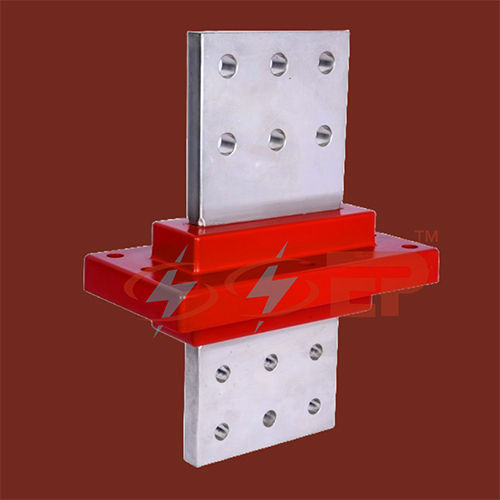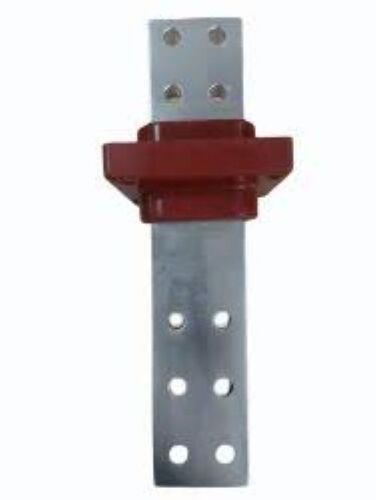Epoxy Bushing
Price 1500 INR/ Unit
Epoxy Bushing Specification
- Size
- 35 mm
- Product Type
- Epoxy Bushing
- Material
- Stainless Steel / Iron
- Thickness
- 0.1 mm to 2 mm Micrometers (um)
- Application
- Transformer
- Color
- Red
- Phase
- 3 Phase
About Epoxy Bushing
"); display: inline-block; height: 24px; width: 24px; transform: rotateZ(180deg);">
"); display: inline-block; height: 24px; width: 24px; transform: rotateZ(180deg);">An epoxy bushing, also known as a resin bushing or cast resin bushing, is a type of electrical insulation component used in high-voltage electrical equipment, such as transformers, circuit breakers, switchgear, and capacitors. Epoxy bushings are designed to provide insulation and support for conductors, cables, or components passing through walls or barriers in electrical enclosures. Here are some key features and considerations related to epoxy bushings:
"); display: inline-block; height: 24px; width: 24px; transform: rotateZ(180deg);">
"); display: inline-block; height: 24px; width: 24px; transform: rotateZ(180deg);">1. Material Epoxy bushings are typically made of high-quality epoxy resin, which is a durable and thermosetting plastic material known for its excellent electrical insulation properties, mechanical strength, chemical resistance, and thermal stability.
"); display: inline-block; height: 24px; width: 24px; transform: rotateZ(180deg);">
"); display: inline-block; height: 24px; width: 24px; transform: rotateZ(180deg);">2. Insulation The primary function of epoxy bushings is to provide electrical insulation and isolation between conductive parts or components, preventing electrical arcing, short circuits, and flashovers. Epoxy resin has high dielectric strength and can withstand high voltages without breakdown.
"); display: inline-block; height: 24px; width: 24px; transform: rotateZ(180deg);">
"); display: inline-block; height: 24px; width: 24px; transform: rotateZ(180deg);">3. Design Epoxy bushings come in various designs and configurations to suit different applications and installation requirements. Common types of epoxy bushings include:
"); display: inline-block; height: 24px; width: 24px; transform: rotateZ(180deg);"> - Straight bushings: Used for passing conductors or cables through walls or barriers in a straight line.
"); display: inline-block; height: 24px; width: 24px; transform: rotateZ(180deg);"> - Tapered bushings: Used for connecting components with different diameters, such as transformers and circuit breakers.
"); display: inline-block; height: 24px; width: 24px; transform: rotateZ(180deg);"> - Threaded bushings: Equipped with internal or external threads for securing connections or mounting hardware.
"); display: inline-block; height: 24px; width: 24px; transform: rotateZ(180deg);"> - Flanged bushings: Featuring flanges or mounting tabs for attaching to equipment enclosures or structures.
"); display: inline-block; height: 24px; width: 24px; transform: rotateZ(180deg);">
"); display: inline-block; height: 24px; width: 24px; transform: rotateZ(180deg);">4. Installation Epoxy bushings are typically installed by casting or molding them into position during the manufacturing or assembly of electrical equipment. The epoxy resin is poured or injected into molds or cavities around the conductors or components, where it cures and forms a solid, rigid insulation barrier.
"); display: inline-block; height: 24px; width: 24px; transform: rotateZ(180deg);">
"); display: inline-block; height: 24px; width: 24px; transform: rotateZ(180deg);">5. Sealing Epoxy bushings provide effective sealing and protection against environmental factors, such as moisture, dust, dirt, and contaminants, which can degrade electrical insulation and compromise equipment reliability. The epoxy resin encapsulates and seals the conductors or components, preventing ingress of foreign matter.
"); display: inline-block; height: 24px; width: 24px; transform: rotateZ(180deg);">
"); display: inline-block; height: 24px; width: 24px; transform: rotateZ(180deg);">6. Temperature Resistance Epoxy bushings exhibit high temperature resistance, allowing them to withstand elevated temperatures encountered in electrical equipment during normal operation and overload conditions. The epoxy resin remains stable and does not soften, melt, or degrade at high temperatures.
"); display: inline-block; height: 24px; width: 24px; transform: rotateZ(180deg);">
"); display: inline-block; height: 24px; width: 24px; transform: rotateZ(180deg);">7. Corrosion Resistance Epoxy bushings offer excellent corrosion resistance, making them suitable for use in harsh environments and outdoor applications where exposure to moisture, chemicals, and atmospheric pollutants is a concern. The epoxy resin is inert and non-reactive to most corrosive agents.
"); display: inline-block; height: 24px; width: 24px; transform: rotateZ(180deg);">
"); display: inline-block; height: 24px; width: 24px; transform: rotateZ(180deg);">8. Maintenance Epoxy bushings require minimal maintenance over their service life, as they are resistant to aging, cracking, and degradation. Periodic inspection may be necessary to check for signs of damage, wear, or deterioration and to ensure proper electrical insulation performance.
"); display: inline-block; height: 24px; width: 24px; transform: rotateZ(180deg);">
"); display: inline-block; height: 24px; width: 24px; transform: rotateZ(180deg);">9. Safety Epoxy bushings contribute to the safety and reliability of electrical equipment by providing effective electrical insulation, reducing the risk of electrical faults, fires, and equipment failures. Proper design, installation, and maintenance of epoxy bushings are essential to ensure safe operation.
"); display: inline-block; height: 24px; width: 24px; transform: rotateZ(180deg);">
"); display: inline-block; height: 24px; width: 24px; transform: rotateZ(180deg);">Overall, epoxy bushings are essential components in high-voltage electrical equipment, providing reliable electrical insulation, mechanical support, and environmental protection for conductors and components. By considering factors such as material, insulation properties, design, installation, sealing, temperature resistance, corrosion resistance, maintenance, and safety, users can select and utilize epoxy bushings effectively in their electrical systems to ensure optimal performance and reliability.


Price:
- 50
- 100
- 200
- 250
- 500
- 1000+
More Products in Epoxy Bushing Category
Epoxy Bushing 3.6KV
Price 175 INR / Piece
Minimum Order Quantity : 10 Pieces
Product Type : Epoxy Bushing 3.6KV
Color : Red
Material : Stainless Steel / Iron
Application : Transformer
Epoxy Bushing 1.1KV 4000A
Price 1500 INR / Unit
Minimum Order Quantity : 04 Units
Product Type : Epoxy Resin Cast
Color : Red or Chocolate Brown
Material : Epoxy
Application : Electrical
Epoxy Transformer Bushing
Price 1500 INR / Unit
Minimum Order Quantity : 10 Units
Product Type : Epoxy Transformer Bushing
Color : Red
Material : Stainless Steel / Iron
Application : Transformer
LV Bushing
Price 1500 INR / Unit
Minimum Order Quantity : 10 Units
Product Type : LV Bushing
Color : Red
Material : Stainless Steel / Iron
Application : Transformer

 Send Inquiry
Send Inquiry






